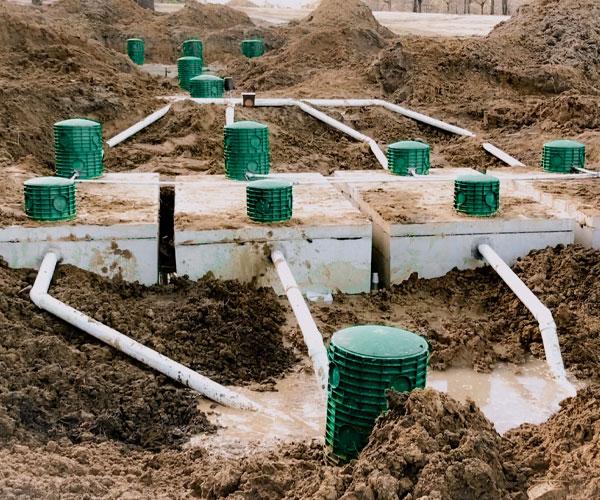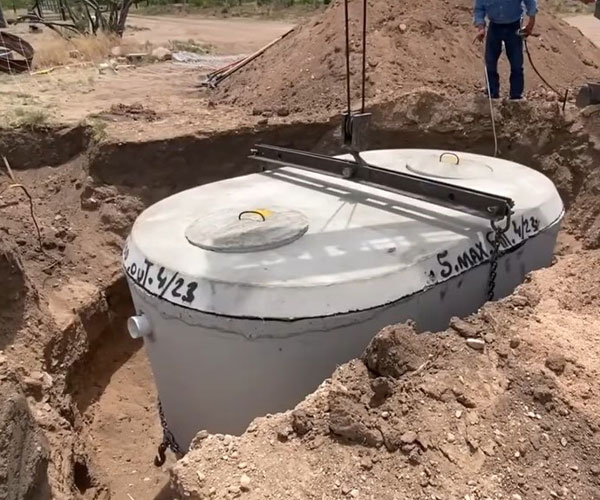
Best Concrete Septic Tank Installation Near Houston, Harris County
1. Why Choosing the Right Septic Installer Feels So Overwhelming
If you’re reading this, chances are you’re trying to make a big decision one that affects your home, your land, your family’s daily routine, and your wallet. It’s not just about picking a tank. It’s about putting your trust in someone to dig into your yard, install a critical system, and do it right the first time.
Maybe you’ve had bad experiences with contractors before. Maybe you’ve heard stories from neighbors about tanks that failed early or required expensive fixes. Or maybe you’re just not sure what the difference is between one installer and the next.
We get it. It can feel like everyone’s promising the same thing fast installs, great service, low prices. But here in Texas, especially in areas like Houston and the counties we serve, the details matter. The right team doesn’t just pour concrete. They plan, they customize, and they protect your home from long-term headaches.
So let’s walk through it together.

2. What a Concrete Septic Tank Actually Does (And Why It Matters in Texas)
Think of your septic tank like the lungs of your property. It manages all the wastewater from your home, holding and breaking down waste before it moves into the drain field. If it’s built poorly or installed wrong, the system starts to suffocate slowly, and then all at once.
Concrete tanks are the heavy-duty option. They’re strong, durable, and made to last for decades. But in places like Houston where clay soils shift and flooding can sneak up fast, the tank has to be placed with care. If it’s not, the concrete can crack or float up from the ground when water levels rise. That’s not just a mess it’s an expensive one.
3. Concrete vs. Plastic Tanks: What’s Best for Houston Soil and Flooding?
You’ve probably seen both options concrete and plastic (poly) tanks. Plastic is lighter, cheaper to install, and works in some parts of the country. But down here in Texas, we’ve seen too many of them buckle, float, or crack under pressure. Especially in flood-prone areas of Harris County or places with expanding clay like Montgomery or Waller County.
Concrete, on the other hand, stays put. It resists pressure from soil movement and water. It’s less likely to develop cracks over time, and if you’ve got a big household or plan to live on your land for the long haul, it’s a solid choice.
Still, it has to be installed right. Concrete isn’t forgiving if it’s not handled carefully.
4. How Much Does a Concrete Septic Tank Installation Cost in Harris County?
Let’s talk dollars. Most concrete septic tank installations in the greater Houston area cost between $4,500 and $12,000, depending on several factors:
Tank size (based on how many people live in your home)
Soil conditions
Distance from the home to the drain field
Permit requirements for your county
Whether it’s a new install or a replacement
Be cautious of anyone offering a “flat rate” without seeing your land or asking questions. Every property is different, and cutting corners to hit a low number usually means problems later.
We always recommend getting a full site evaluation before locking into a price. A good installer will walk your property with you, ask about your usage needs, and factor in things like terrain, access for equipment, and local code.
5. Warning Signs of a Bad Install (And How to Avoid Them)
If you’ve never had a septic tank installed before, here are some red flags to watch out for:
They don’t check your soil or talk about a perc test
They skip permitting or tell you it’s “not needed”
They give you a quote over the phone with no site visit
They can’t show proof of work in your area
They’re rushing you to sign a contract or put down a deposit
These are signs someone is trying to move fast, not smart.
The truth is, septic work is part science, part art. And if the installer doesn’t care about both, you’ll end up paying twice once now and again when something breaks.
6. What Makes a Good Installer? 5 Things to Look for in Houston and Beyond
Here’s what we recommend you look for in a concrete septic tank installer:
Local experience – They should know how your county handles permitting and inspections.
Soil knowledge – Different soil types call for different approaches. Your installer should talk about clay, sand, loam, and how it affects the tank and drain field.
Transparent pricing – No hidden fees. No “extra” equipment surprises halfway through the job.
References or recent projects – Ask to see photos or locations of past work. Bonus if they’ve done work in your exact area.
Willingness to explain – A great contractor won’t make you feel dumb for asking questions. If they take time to explain the process, that’s a good sign they’ll take time with the work too.
7. The Step-by-Step Process: What to Expect from Start to Finish
If you hire someone like us, here’s what the process usually looks like:
Initial phone call or online request
We talk through your goals and your timeline and set up a site visit.On-site evaluation
We inspect the land, check for access issues, and talk about tank size and placement.Soil testing or perc test
Depending on your county’s rules, this is where we test how well your soil absorbs water.System design and permit application
We draw up a custom plan, handle the paperwork, and keep you in the loop.Installation day(s)
We excavate, set the tank, install the drain field, and backfill.Inspection and final walk-through
County officials inspect the system, and we walk you through what to watch for and how to maintain it.
This process can take a few days to a few weeks depending on the weather, permitting speed, and the complexity of your land.
8. Why Concrete Septic Tanks Fail (and How the Right Installer Prevents It)
No one wants to talk about failure, but it’s worth knowing what goes wrong and how to stop it before it starts.
Common causes of concrete septic tank failure in our region include:
Tanks not set deep enough, so they shift in floods
Poor backfilling that puts uneven pressure on the tank
No risers or access ports installed, making maintenance impossible
Bad water flow design between the house and the tank
A good installer knows how to prevent these. It’s not just about digging a hole and dropping in a tank. It’s about building a system that works for your land, your home, and your long-term needs.
9. Our Approach at A&J Septic Services LLC (Frisco-based, Houston-Focused)
We want to give every homeowner the kind of service we’d want for our own property. That means walking your land like it’s ours. It means answering your calls, even after the job’s done. And it means installing systems that actually work even after heavy rains, long Texas summers, and full households.
We’ve installed concrete septic systems across Harris, Fort Bend, Waller, and Montgomery Counties, and every one of them started with a real conversation. No pressure. No cookie-cutter quotes.
10. Final Tips for Hiring the Best Installer for Your Property
If you’re still reading, here’s the good news: you’re already ahead of most folks. You’re doing the research, asking the right questions, and taking your time. That alone will help you avoid a lot of mistakes.
To wrap up, here are a few last tips:
Don’t just chase the cheapest quote
Ask what happens if something goes wrong in the first year
Talk to at least one homeowner who’s used the installer before
Make sure your system is sized for how your family actually lives
The right installer will make you feel informed, not rushed. Confident, not confused.
And if you’re in Harris County or anywhere nearby, we’d be glad to help.
